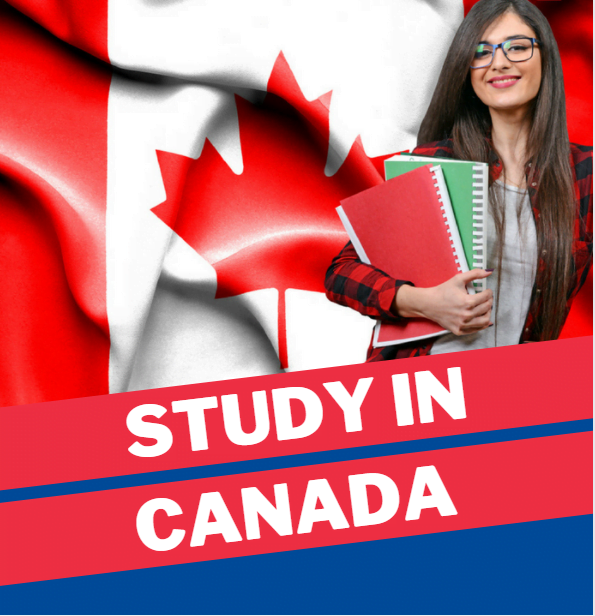Why is Canada Better than Australia for International Students?
Choosing where to pursue your education is a life-altering decision. In a world brimming with choices, Canada and Australia stand as enticing destinations, drawing students with their stellar education, friendly communities, and diverse cultures. But in this academic journey, let’s set sail towards Canada, unraveling why it might just outshine Australia. We’ll be guided by the shining stars of education, career opportunities, quality of life, and immigration policies, illuminating a path to a well-informed choice.
World-Class Education System
Canada proudly showcases its world-renowned education system, a system consistently perched at the pinnacle of global rankings. Canadian universities and colleges are akin to sanctuaries of rigorous academic standards and cutting-edge research possibilities. Canada’s unwavering passion for education shines through its substantial investments, ensuring an unmatched learning voyage for all knowledge seekers. Additionally, numerous Canadian institutions adorn the elite top 100 globally, adding a lustrous constellation to the educational cosmos.

On the other side of the Southern Hemisphere, Australia, too, stands tall as a bastion of educational excellence, offering a parallel standard of academic rigor. Yet, it is Canada’s steadfast dedication to achieving academic eminence and exploring the uncharted realms of research that beckons students with an irresistible allure. For those on the quest for an intellectually enriching academic expedition, Canada’s beacon shines ever so brightly.
Post-Study Work Opportunities
One of the critical factors for international students is the ability to work and gain valuable experience after completing their studies. Canada offers some of the most favorable post-graduation work permit (PGWP) programs globally. International students who graduate from eligible Canadian institutions can obtain an open work permit, allowing them to work anywhere in Canada for up to three years. This generous work permit duration enables students to gain practical experience, which can be vital for their career growth.
In contrast, while Australia also provides post-study work opportunities, the duration of the work permits is typically shorter than in Canada, ranging from 2 to 4 years depending on the level of study. Canada’s more extended work permit duration is a significant advantage for those seeking to gain Canadian work experience and potentially transition to permanent residency.
Quality of Life
Canada consistently secures top marks when it comes to offering a superb quality of life. It’s renowned for being a safe haven with a robust healthcare system and a tapestry of social services. Cities like Toronto, Vancouver, and Montreal serve as vibrant hubs, where cultural adventures await at every corner, and livability is second nature. In Canada, the vibrant mosaic of multiculturalism and the warm embrace of inclusivity ensures that international students don’t just study there; they become a seamless part of the nation’s tapestry.
Australia, too, offers a stellar quality of life, no doubt. Yet, what sets Canada apart is its reputation for safety, its commitment to inclusivity, and the breathtaking natural landscapes that paint its canvas. For international students seeking a holistic experience, Canada’s allure shines especially bright.
Canada’s Immigration Policies:
Express Entry System: Canada’s Express Entry system is a point-based immigration system that assesses candidates based on factors like age, education, work experience, language proficiency, and adaptability. International students in Canada can benefit from the Comprehensive Ranking System (CRS) under Express Entry. Having Canadian education and work experience can earn them valuable CRS points, increasing their chances of receiving an Invitation to Apply (ITA) for permanent residency.

Provincial Nominee Programs (PNPs): Canada’s provinces and territories have their own immigration programs, known as PNPs, which are designed to address specific labor market needs. Many provinces have streams within their PNPs that target international graduates. These streams often have lower eligibility requirements and can provide a faster route to permanent residency for international students.
Canadian Experience Class (CEC): The Canadian Experience Class is a federal immigration program that prioritizes candidates with Canadian work experience. International students who have completed their studies in Canada and gained work experience may be eligible for this program, which can be a straightforward pathway to permanent residency.
Australia’s Immigration Policies:
General Skilled Migration (GSM): Australia offers permanent residency pathways through the GSM program. International students who have completed relevant qualifications in Australia can apply for permanent residency through this program, which assesses candidates based on factors such as age, English language proficiency, work experience, and skills in demand. While studying in Australia can earn some points, the competition for GSM visas can be fierce due to high demand.
Temporary Graduate Visa (subclass 485): The Temporary Graduate visa allows international students who have completed at least two years of study in Australia to live and work in the country temporarily. Depending on the stream (Graduate Work or Post-Study Work), this visa can provide a pathway to permanent residency. However, the duration of the visa and eligibility requirements can vary, and the pathway may not be as direct as some Canadian options.
Key Differences:
In Australia, the competition for permanent residency visas can be more intense due to higher point requirements and limited places available in certain visa categories. This can make it challenging for international students to secure permanent residency.
Canada’s various pathways and provincial programs often provide more accessible routes to permanent residency for international students, especially if they have Canadian education and work experience. The points-based system under Express Entry and the CEC program, in particular, can favor those who have studied and worked in Canada.
Both Canada and Australia offer pathways to permanent residency for international students, but the specific programs and the ease of transition differ. Canada’s welcoming approach, various pathways, and provincial programs often make it an attractive destination for international students seeking to settle and build their careers in the country. However, the choice between Canada and Australia ultimately depends on individual circumstances and preferences.
Diversity and Inclusivity
Canada is celebrated for its commitment to diversity and inclusivity. The country has a strong track record of welcoming people from all backgrounds and cultures. This diversity enriches the learning experience for international students, exposing them to a wide range of perspectives and ideas. Additionally, Canadian institutions prioritize creating inclusive and safe environments for students of all backgrounds. While Australia is also diverse and inclusive, Canada’s reputation for multiculturalism and social cohesion is a compelling factor for international students seeking a supportive and welcoming community.
A Comparison of Financial Documents and Reapplication Opportunities
For Nepalese students aspiring to study abroad, Canada and Australia are both highly sought-after destinations due to their world-class education systems and welcoming environments. However, when it comes to the application process and certain key aspects, applying to Canada can be notably easier compared to Australia.
Canada offers a relatively straightforward process for Nepalese students when it comes to preparing financial documents for a study permit application. The Canadian government typically requires students to demonstrate sufficient funds to cover tuition fees, living expenses, and return transportation.
Canada’s financial requirements are well-defined, making it easier for Nepalese students to understand and plan their finances accordingly. The Canadian government provides clear guidelines on the minimum amount of money needed to support oneself while studying in Canada. In comparison, Australia’s financial requirements can be more complex and demanding. Australian authorities may require students to prove that they have access to substantial funds, and the documentation process can be more stringent.
Ability to Reapply:
Another significant advantage for Nepalese students applying to Canada is the opportunity to reapply in case of visa refusal. This is in contrast to Australia, where reapplying can be more challenging due to stricter policies.
Canada is known for its positive approach toward immigration and international students. In the event of a study permit application being refused, students are typically provided with a detailed explanation of the reasons for the refusal. This transparency enables students to address any issues and reapply with necessary adjustments. Nepalese students who face visa refusals in Canada have the chance to reapply after addressing the concerns raised by immigration authorities. This may involve providing additional documentation or clarifications to strengthen their application.

In contrast, Australia has stricter policies regarding visa refusals. Reapplying after a visa refusal can be challenging, and there may be limited opportunities to rectify errors or provide further information to support the application.
Conclusion
Both Canada and Australia beckon international students with the promise of an outstanding education and the potential to carve promising careers. Yet, when one meticulously weighs the scales, Canada emerges as an entrancing contender.
Canada’s dedication to academic brilliance, coupled with its generosity in bestowing post-graduation work permits, sets it apart on this educational stage. It is a land where the quality of life is paramount, where immigration policies are tailored to embrace international students, and where diversity is woven into the very fabric of society. These attributes coalesce to form a magnetic force that draws in seekers of a profoundly enriching and transformative global education experience.
The ultimate choice between Canada and Australia hinges upon individual inclinations and aspirations. Nonetheless, the myriad advantages that Canada extends make it a beacon for international students embarking on the remarkable journey of studying abroad, a place where dreams are nurtured and horizons broadened.













